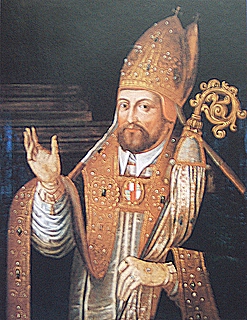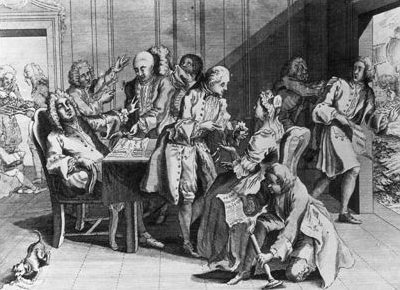|
Johann Salver
Johann Salver (ca. 1670–1738) was a German Engraving, engraver from the town of Forchheim, and the father of Johann Octavian Salver. Salver is the author of ''Die Gross und Landmeister des Deutschen Ordens'' containing 51 plates, published in Würzburg in 1716, and the series on the Würzburg prince-bishops titled ''Geschicht-Schreiber von dem Bischoffthum Wirtzburg'', published in 1713. 17th-century German engravers 18th-century German engravers 1670s births 1738 deaths People from Forchheim Artists from Würzburg {{Germany-artist-stub ... [...More Info...] [...Related Items...] OR: [Wikipedia] [Google] [Baidu] |
Engraving
Engraving is the practice of incising a design on a hard, usually flat surface by cutting grooves into it with a Burin (engraving), burin. The result may be a decorated object in itself, as when silver, gold, steel, or Glass engraving, glass are engraved, or may provide an Intaglio (printmaking), intaglio printing plate, of copper or another metal, for printing images on paper as prints or illustrations; these images are also called "engravings". Engraving is one of the oldest and most important techniques in printmaking. Wood engravings, a form of relief printing and stone engravings, such as petroglyphs, are not covered in this article. Engraving was a historically important method of producing images on paper in artistic printmaking, in mapmaking, and also for commercial reproductions and illustrations for books and magazines. It has long been replaced by various photographic processes in its commercial applications and, partly because of the difficulty of learning the techni ... [...More Info...] [...Related Items...] OR: [Wikipedia] [Google] [Baidu] |
Forchheim
Forchheim () is a Town#Germany, town in Upper Franconia () in northern Bavaria, and also the seat of the administrative Forchheim (district), district of Forchheim. Forchheim is a former royal city, and is sometimes called the Gateway to the Franconian Switzerland, referring to the region of outstanding natural beauty to the north east of the town. Nowadays Forchheim is most famous for its ten day long beer and music festival (Annafest) which takes place in late July in an idyllic wooded hillside, home to 24 beer gardens, on the outskirts of the town. Forchheim's population, as of December 2013, was 30,705, and its land area is . Its position is 49° 44' N, 11° 04' E and its elevation is Above mean sea level, above sea level. Name and coat of arms When the coat of arms was bestowed upon the town at the beginning of the 13th century, people wrongly believed that their town's name, "Vorchheim" originates from the Old High German word ''vorhe'' (“trout”). This resulted in the ... [...More Info...] [...Related Items...] OR: [Wikipedia] [Google] [Baidu] |
Johann Octavian Salver
Johann Octavian Salver (1732–1788) was a German diplomat, archivist, and engraver. Biography Born on 19 May 1732 at Würzburg as a son of the engraver Johann Salver († 1738) from his third wife. He attended high school until 1749, then the University of Würzburg where he first studied the law, then history and heraldry. He showed talent for painting and practiced diligently in drawing. Because he lacked the means to further his art education and failed to secure support from wealthy benefactors, Salver returned to his legal studies although he also dealt in passing with the production of maps. Later he did historical research in Gotha, Weimar, Mainz, Speyer, etc. In 1762 Salver was appointed ''Episcopal Lehnamtsregistrator''. In addition, beginning in 1768, he worked as a diplomat for the Bishopric of Würzburg. In 1770 he was a ''Protocollist'' of the princely court chamber and head of the Jewish Office. In his spare time he made a description of the Erthal collection ... [...More Info...] [...Related Items...] OR: [Wikipedia] [Google] [Baidu] |
Würzburg
Würzburg (; Main-Franconian: ) is, after Nuremberg and Fürth, the Franconia#Towns and cities, third-largest city in Franconia located in the north of Bavaria. Würzburg is the administrative seat of the Regierungsbezirk Lower Franconia. It spans the banks of the Main (river), Main river. Würzburg is situated approximately 110 km west-northwest of Nuremberg and 120 km east-southeast of Frankfurt, Frankfurt am Main. The population as of 2019 is approximately 130,000 residents. Würzburg is famous for its partly rebuilt and reconstructed old town and its Würzburger Residenz, a palace that is a List of World Heritage Sites in Germany, UNESCO World Heritage Site. The regional dialect is East Franconian German. History Early and medieval history A Bronze Age Europe, Bronze Age (Urnfield culture) refuge castle, the Celtic Segodunum, and later a Roman Empire, Roman fort, stood on the hill known as the Leistenberg, the site of the present Fortress Marienberg. The ... [...More Info...] [...Related Items...] OR: [Wikipedia] [Google] [Baidu] |
Prince-bishop
A prince-bishop is a bishop who is also the civil ruler of some secular principality and sovereignty, as opposed to '' Prince of the Church'' itself, a title associated with cardinals. Since 1951, the sole extant prince-bishop has been the Bishop of Urgell, Catalonia, who has remained ''ex officio'' one of two co-princes of Andorra, along with the French president. Overview In the West, with the decline of imperial power from the 4th century onwards in the face of the barbarian invasions, sometimes Christian bishops of cities took the place of the Roman commander, made secular decisions for the city and led their own troops when necessary. Later relations between a prince-bishop and the burghers were invariably not cordial. As cities demanded charters from emperors, kings, or their prince-bishops and declared themselves independent of the secular territorial magnates, friction intensified between burghers and bishops. The principality or prince-bishopric (Hochstift) r ... [...More Info...] [...Related Items...] OR: [Wikipedia] [Google] [Baidu] |
17th-century German Engravers
The 17th century lasted from January 1, 1601 (represented by the Roman numerals MDCI), to December 31, 1700 (MDCC). It falls into the early modern period of Europe and in that continent (whose impact on the world was increasing) was characterized by the Baroque cultural movement, the latter part of the Spanish Golden Age, the Dutch Golden Age, the French ''Grand Siècle'' dominated by Louis XIV, the Scientific Revolution, the world's first public company and megacorporation known as the Dutch East India Company, and according to some historians, the General Crisis. From the mid-17th century, European politics were increasingly dominated by the Kingdom of France of Louis XIV, where royal power was solidified domestically in the civil war of the Fronde. The semi-feudal territorial French nobility was weakened and subjugated to the power of an absolute monarchy through the reinvention of the Palace of Versailles from a hunting lodge to a gilded prison, in which a greatly expanded r ... [...More Info...] [...Related Items...] OR: [Wikipedia] [Google] [Baidu] |
18th-century German Engravers
The 18th century lasted from 1 January 1701 (represented by the Roman numerals MDCCI) to 31 December 1800 (MDCCC). During the 18th century, elements of Enlightenment thinking culminated in the Atlantic Revolutions. Revolutions began to challenge the legitimacy of monarchical and aristocratic power structures. The Industrial Revolution began mid-century, leading to radical changes in human society and the environment. The European colonization of the Americas and other parts of the world intensified and associated mass migrations of people grew in size as part of the Age of Sail. During the century, slave trading expanded across the shores of the Atlantic Ocean, while declining in Russia and China. Western historians have occasionally defined the 18th century otherwise for the purposes of their work. For example, the "short" 18th century may be defined as 1715–1789, denoting the period of time between the death of Louis XIV of France and the start of the French Revolution, ... [...More Info...] [...Related Items...] OR: [Wikipedia] [Google] [Baidu] |
1670s Births
Year 167 ( CLXVII) was a common year starting on Wednesday of the Julian calendar. At the time, it was known as the Year of the Consulship of Aurelius and Quadratus (or, less frequently, year 920 ''Ab urbe condita''). The denomination 167 for this year has been used since the early medieval period, when the Anno Domini calendar era became the prevalent method in Europe for naming years. Events By place Roman Empire * Lucius Aurelius Verus Augustus and Marcus Ummidius Quadratus Annianus become Roman Consuls. * The Marcomanni tribe wages war against the Romans at Aquileia. They destroy aqueducts and irrigation conduits. Marcus Aurelius repels the invaders, ending the Pax Romana (Roman Peace) that has kept the Roman Empire free of conflict since the days of Emperor Augustus. * The Vandals ( Astingi and Lacringi) and the Sarmatian Iazyges invade Dacia. To counter them, Legio V ''Macedonica'', returning from the Parthian War, moves its headquarters from Troesmis in ... [...More Info...] [...Related Items...] OR: [Wikipedia] [Google] [Baidu] |
1738 Deaths
Events January–March * January 1 – At least 664 African slaves drown when the Dutch West Indies Company slave ship ''Leusden'' capsizes and sinks in the Maroni River during its arrival in Surinam. The Dutch crew escapes, and leaves the slaves locked below decks to die. * January 3 – George Frideric Handel's opera '' Faramondo'' is given its first performance. * January 7 – After the Maratha Empire of India wins the Battle of Bhopal over the Jaipur State, Jaipur cedes the Malwa territory to the Maratha in a treaty signed at Doraha. * February 4 – Court Jew Joseph Süß Oppenheimer is executed in Württemberg. * February 11 – Jacques de Vaucanson stages the first demonstration of an early automaton, '' The Flute Player'' at the Hotel de Longueville in Paris, and continues to display it until March 30. * February 20 – The Swedish Levant Company is founded. * March 28 – Mariner Robert Jenkins presents a pickle ... [...More Info...] [...Related Items...] OR: [Wikipedia] [Google] [Baidu] |
People From Forchheim
The term "the people" refers to the public or common mass of people of a polity. As such it is a concept of human rights law, international law as well as constitutional law, particularly used for claims of popular sovereignty. In contrast, a people is any plurality of persons considered as a whole. Used in politics and law, the term "a people" refers to the collective or community of an ethnic group or nation. Concepts Legal Chapter One, Article One of the Charter of the United Nations states that "peoples" have the right to self-determination. Though the mere status as peoples and the right to self-determination, as for example in the case of Indigenous peoples (''peoples'', as in all groups of indigenous people, not merely all indigenous persons as in ''indigenous people''), does not automatically provide for independent sovereignty and therefore secession. Indeed, judge Ivor Jennings identified the inherent problems in the right of "peoples" to self-determination, as i ... [...More Info...] [...Related Items...] OR: [Wikipedia] [Google] [Baidu] |





